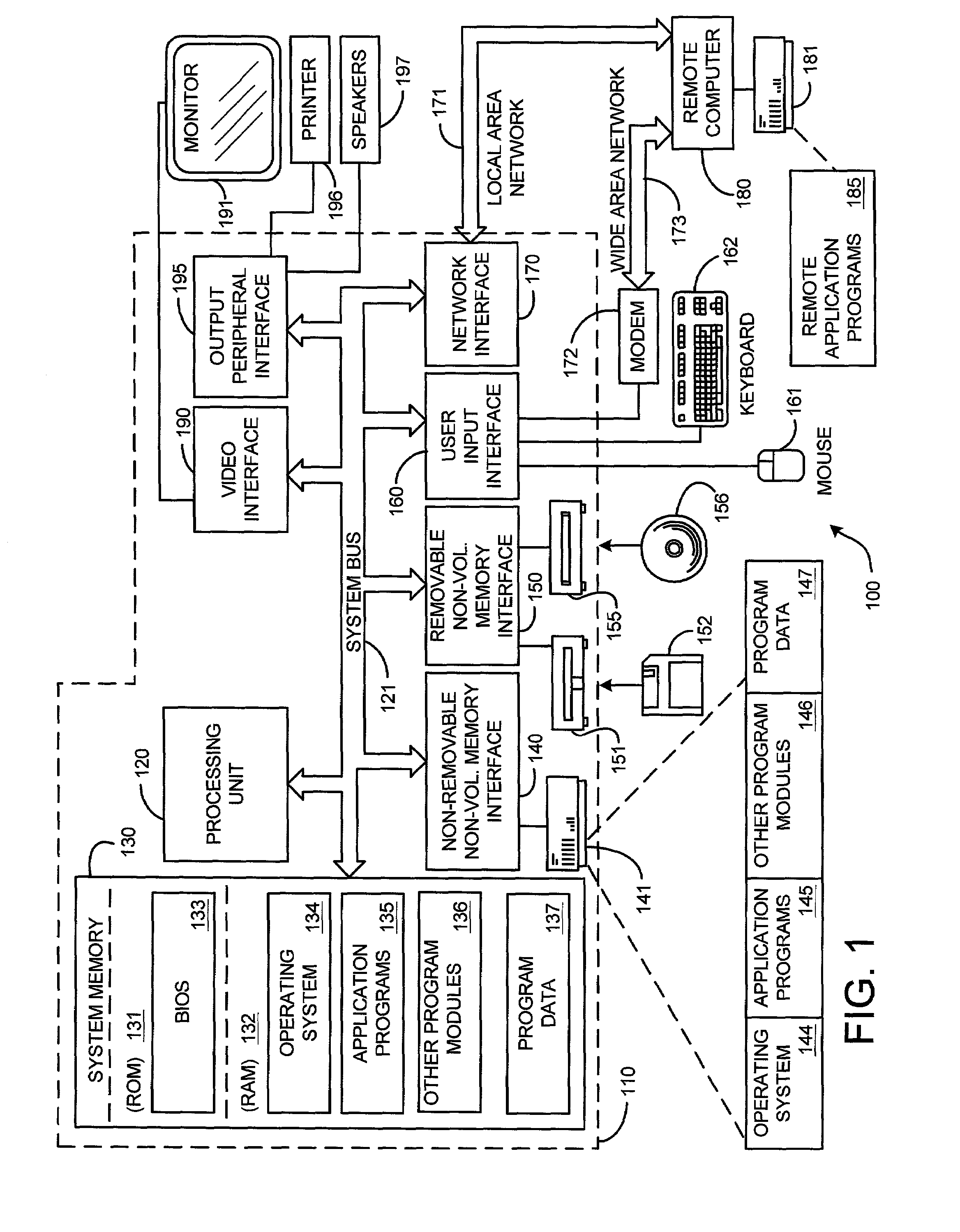System and method for embedded audio coding with implicit auditory masking
a masking and embedded audio technology, applied in the field of audio coders, can solve the problems of inaudible to the listener, difficult to distinguish between a 1,000 hz signal and a 1,001 hz signal, and become even more difficult for a human to distinguish such signals, so as to improve audio compression efficiency and eliminate overhead
- Summary
- Abstract
- Description
- Claims
- Application Information
AI Technical Summary
Benefits of technology
Problems solved by technology
Method used
Image
Examples
working example
4.0 WORKING EXAMPLE
[0125]In a simple working example of the present invention, the program modules described in Section 2 reference to FIG. 4 in view of the detailed description provided in Section 3 were employed encode a group of audio files using the embedded audio coding with implicit auditory masking described herein. Details of a group of experiments illustrating the success of the system and method for embedded audio coding with implicit auditory masking are provided in the following section.
PUM
 Login to View More
Login to View More Abstract
Description
Claims
Application Information
 Login to View More
Login to View More - R&D
- Intellectual Property
- Life Sciences
- Materials
- Tech Scout
- Unparalleled Data Quality
- Higher Quality Content
- 60% Fewer Hallucinations
Browse by: Latest US Patents, China's latest patents, Technical Efficacy Thesaurus, Application Domain, Technology Topic, Popular Technical Reports.
© 2025 PatSnap. All rights reserved.Legal|Privacy policy|Modern Slavery Act Transparency Statement|Sitemap|About US| Contact US: help@patsnap.com



